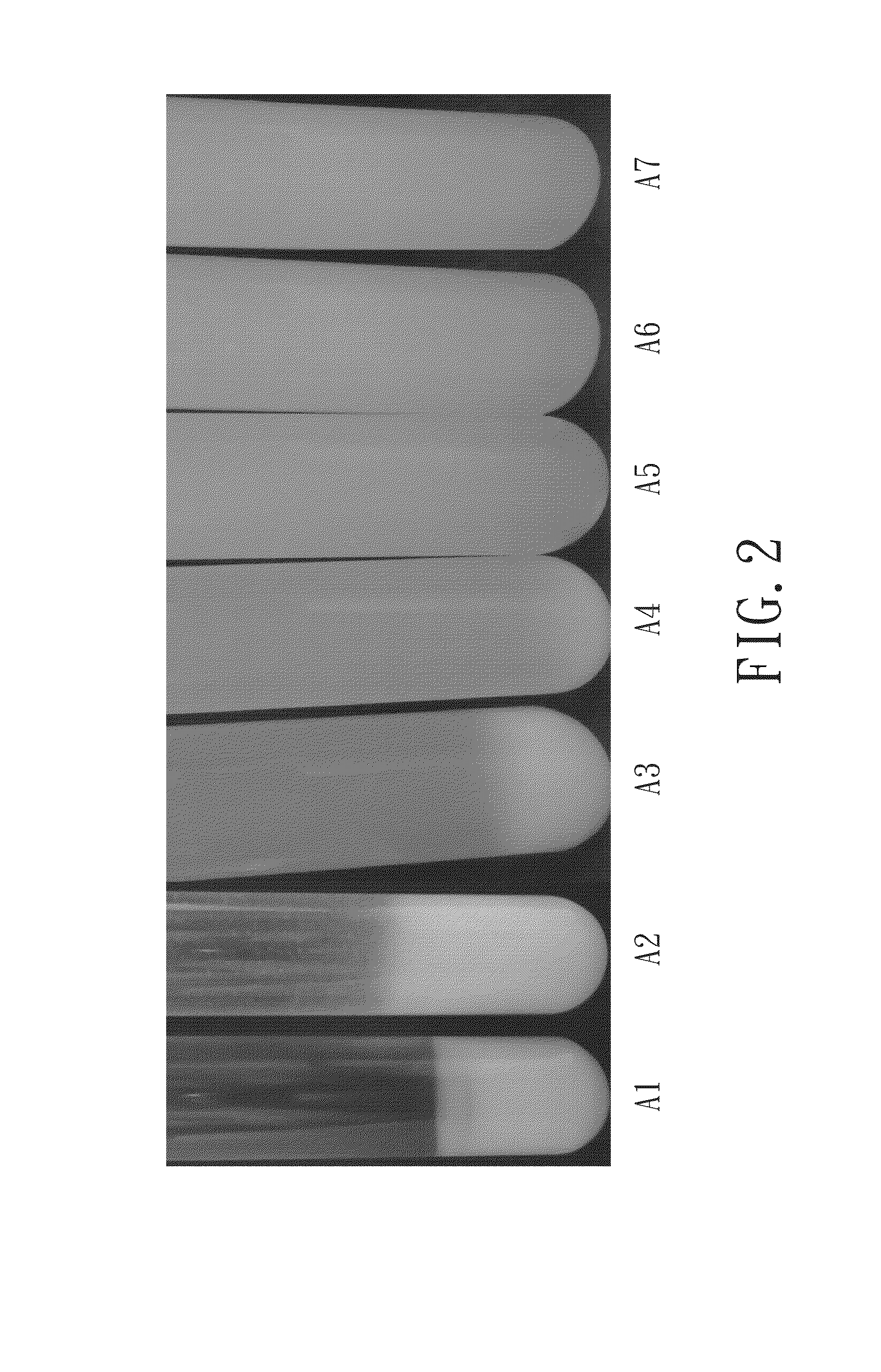Royal jelly solution and method for producing same
a technology of royal jelly and solution, which is applied in the field of royal jelly solution, can solve the problems of unfavorable human health, long-term storability and taste drawbacks of natural royal jelly, and achieve the effect of increasing nutritional valu
- Summary
- Abstract
- Description
- Claims
- Application Information
AI Technical Summary
Benefits of technology
Problems solved by technology
Method used
Image
Examples
example 1
Comparison of Invented Method with Conventional Enzymatic Treatment in Terms of Effects
[0041]Seven test tubes, designated as A1, A2, A3, A4, A5, A6 and A7 were provided, each being loaded with an aliquot of an aqueous royal jelly suspension in which royal jelly was included at a concentration of 5.8 wt %. The seven samples were subjected to the following treatments, respectively:
[0042]A1: Pepsin was added in an amount of 0 wt % based on the weight of the aqueous royal jelly suspension and allowed to react at 45° C. for 6 hours. Then, an acidic protease derived from Aspergillus oryzae) was added in an amount of 0.1 wt % based on the weight of the aqueous royal jelly suspension and allowed to react at 45° C. for additional 6 hours. The resultant solution was adjusted to pH 5.5 and subjected to heat at 80° C. for 10 minutes to quench the enzymatic action.
[0043]A2: The aqueous royal jelly suspension was adjusted to pH 8. Then, a neutral protease (Prolease, a protease from Bacillus subti...
example 2
Tests for Solution Stability, Stability Coefficient, Active Substances and Suspension Stability
[0050]Five samples of royal jelly solutions B1, B2, B3, B9 and B5 prepared by the method according to the invention were provided in comparison with the royal jelly sample solutions C1, C2, C3, C4 and C5 produced by the conventional methods, in terms of sedimentation rate, stability coefficient, 10-hydroxy-2-decenoic acid content and the stability thereof, and suspension stability. The sample solutions B1˜B5 and C1˜C5 were prepared according to the following processes, respectively:
[0051]Sample Solution B1:
[0052]100 grams of royal jelly was uniformly mixed with water at room temperature (around 25° C.) to reach a final weight of 1 kg, resulting in an aqueous suspension of 10 wt % royal jelly. The aqueous suspension was adjusted to pH 4 and then heated to 60° C. To the aqueous royal jelly suspension, 10 g papain (1% by weight of the aqueous royal jelly suspension) was added to obtain a roya...
example 3
Protein Identification
[0080]The masses of the proteins or protein fragments in royal jelly sample solutions are identified by peptide mass fingerprinting technology using a matrix-assisted laser desorption ionization time-of-flight mass spectrometer (MALFI-TOF-MASS; Applied Biosystems Voyager-DE™ PR; Operation Mode: linear, Polarity: positive, Voltage: 2000V, Mass Range: 500˜45000Da). An enzyme-untreated royal jelly sample solution D1, as well as royal jelly sample solutions D2˜D7 produced under different enzymatic reaction conditions, were characterized to identify proteins contained in the respective solutions. The sample solutions D1˜D7 were prepared according to the following processes, respectively:
[0081]Sample Solution D1:
[0082]An aqueous suspension of 6 wt % royal jelly was prepared without being subjected to any enzymatic treatment.
[0083]Sample Solution D2:
[0084]An aqueous suspension of 6 wt % royal jelly was prepared, to which papain was added in an amount of 0.1 wt % based...
PUM
| Property | Measurement | Unit |
|---|---|---|
| Temperature | aaaaa | aaaaa |
| Temperature | aaaaa | aaaaa |
| Length | aaaaa | aaaaa |
Abstract
Description
Claims
Application Information
 Login to View More
Login to View More - R&D
- Intellectual Property
- Life Sciences
- Materials
- Tech Scout
- Unparalleled Data Quality
- Higher Quality Content
- 60% Fewer Hallucinations
Browse by: Latest US Patents, China's latest patents, Technical Efficacy Thesaurus, Application Domain, Technology Topic, Popular Technical Reports.
© 2025 PatSnap. All rights reserved.Legal|Privacy policy|Modern Slavery Act Transparency Statement|Sitemap|About US| Contact US: help@patsnap.com



